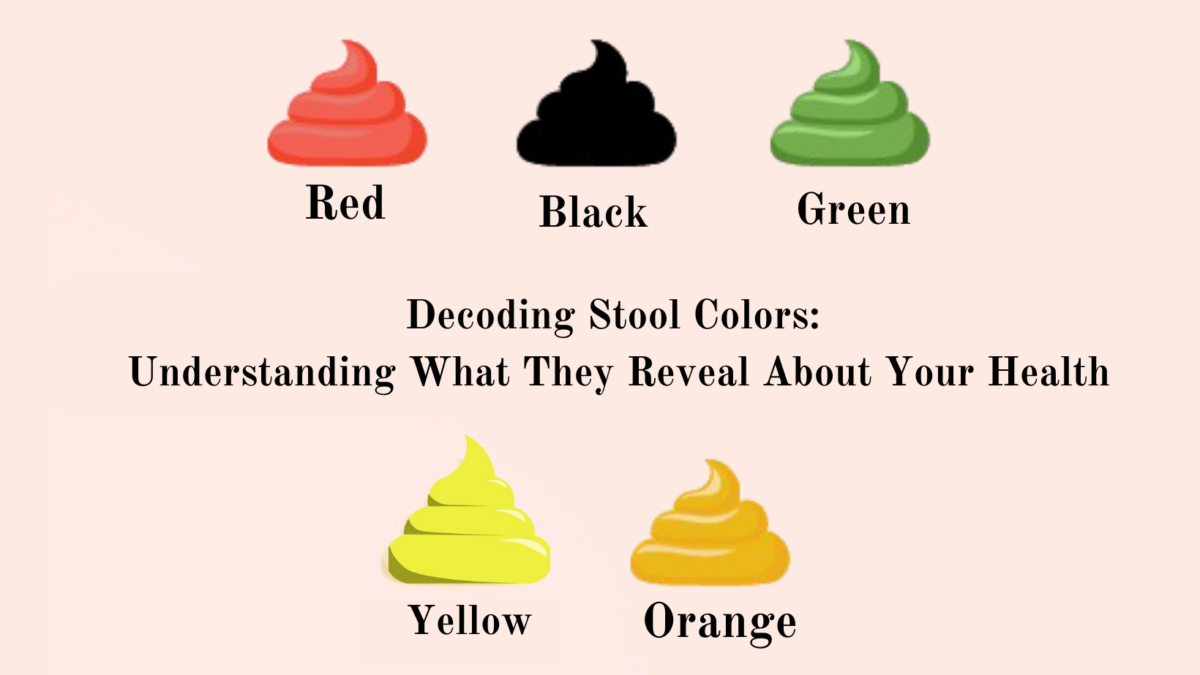Have you ever noticed a change in the colour of your stool and wondered what it might signify? While it's true that various factors, such as diet, can influence the colour of your waste, sometimes it can indicate an underlying health issue. In this blog post, we will explore the different colours of stool, their possible meanings, and the potential dietary causes associated with each colour.
Normal Poop Color
Typically, healthy stool appears brown, which is the result of what you eat and the presence of bile in your stool. Bile, a fluid produced by the liver to aid in fat digestion, starts off as a yellowish-green colour. As it travels through your digestive system, the pigments in bile undergo chemical changes, resulting in a characteristic brown colour.
Green Poop
Occasionally, you may notice a slightly greenish hue or even vivid green colour in your stool. In most cases, green or greenish poop is considered normal and is often a result of your diet. Consuming green vegetables like spinach or kale, foods with green food colouring, or iron supplements can contribute to green-coloured stool. However, if you experience green diarrhoea, it may be an indication that your food has passed through your gut too quickly, preventing bile from turning brown
Yellow Poop
While a yellowish shade is normal for some individuals, especially babies who are breastfed, excessively greasy and foul-smelling yellow stool might indicate an issue with fat digestion. Celiac disease, an intolerance to gluten found in wheat, barley, and rye, can lead to yellow poop if gluten-containing foods are consumed. If you consistently observe yellow stool alongside gluten consumption, it's advisable to consult a healthcare professional for evaluation. Other potential causes of yellow stool include pancreatic disorders or liver problems.
White, Pale, or Clay-Colored Poop
In some cases, stool may lack colour or appear pale. This is typically unrelated to dietary factors. Medications like bismuth subsalicylate (found in products like Kaopectate and Pepto-Bismol) and barium used for diagnostic tests can cause pale or clay-coloured poop. A more concerning cause is a decrease in bile production or a blockage in the bile ducts, potentially indicating liver disease or gallstones. If you notice persistently pale or clay-coloured stool, it's crucial to consult a healthcare professional for further evaluation.
Black Poop
Newborn babies may have black poop in their first few days of life, but for others, black stool could be due to consuming dark-coloured foods or certain medications and supplements. However, black poop can also be a sign of bleeding in the upper digestive tract, necessitating medical attention. Foods like black liquorice, blueberries, iron supplements, and medications containing bismuth subsalicylate may contribute to dark stools.
Red or Reddish Poop
If you observe red or reddish poop in the toilet, it's essential to consider recent consumption of red-coloured foods. Beets, tomato soup, gelatin desserts, and red drinks can temporarily change the colour of your stool to pink or reddish. However, suppose you're certain that your diet isn't responsible. In that case, red stool may indicate bleeding in the lower part of your digestive tract, potentially due to haemorrhoids, colitis, or other conditions. Consulting a healthcare expert is recommended in such cases.
Orange Poop
Sometimes, poop can appear orange, mirroring the colour of foods consumed, particularly if you have diarrhoea. Foods rich in beta-carotene, like carrots, winter squash, pumpkin, and sweet potatoes, can contribute to orange-coloured stool. Additionally, certain antibiotics and antacids containing aluminium hydroxide may cause this change. However, persistent orange poop could be a sign of liver issues, although it is more commonly associated with pale or clay-coloured stool.
Conclusion
Understanding the different colours of stool can provide valuable insights into your digestive health. While most changes in stool colour are harmless and can be attributed to diet, it's crucial to pay attention to persistent or concerning variations that may indicate underlying health conditions.
If you notice consistently abnormal stool colours, such as white, bright red, or black, and suspect they are unrelated to your diet, it's best to seek professional advice. Remember, most changes in stool colour are harmless, but it's always better to err on the side of caution when it comes to your health.









